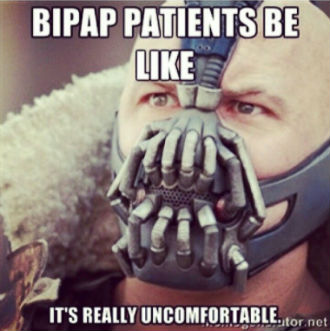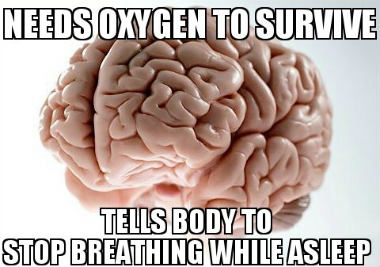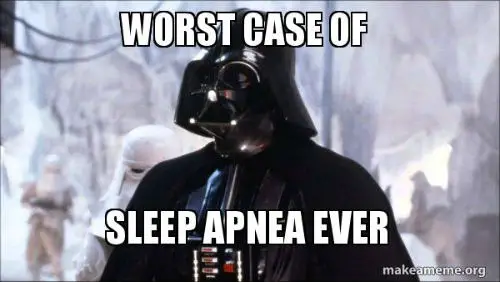More than 22 million people in America have sleep apnea. If you’re one of them, you know that you have three ways of alleviating it – BiPAP, CPAP, and APAP. They all belong to the PAP therapy family and stand for positive airway pressure. In other words, they involve specially designed machines meant to blow air into your respiratory canal. But which one is the best? Are there any differences between them? Let’s put BiPAP vs CPAP vs APAP to the test and see what we can find out from the review!
To put it as simply as possible, when reviewing all three solutions, they have things in common, of course, since they belong to the same type of treatment family. However, they also have subtle differences in the way they work that might make them a good fit for you or not. In other words, one cannot say that BiPAP is better than CPAP or then APAP or that the first two are better than the last, for example. The reason is that they offer a few different advantages and disadvantages, they come at different price points, and they cater to different types of people, as you are about to see from this review.
As a consequence the main thing that differentiates the three type of treatments for sleep apnea is still you, the patient. In the sense that one, for example, may be better suited for overweight people or those suffering from heart disease, while another works best for people who don’t have problems breathing. At the same time, both CPAP and APAP are cheaper than BiPAP, which will be a defining criterion for most of you out there.
BiPAP vs CPAP vs APAP: Comparison Table
| BiPAP | CPAP | APAP |
|---|---|---|
| The most expensive of the three | The most budget-friendly option | It’s affordable |
| The most comfortable of the three | Provides comfort during sleep apnea episodes | You can get used to it |
| Can drink a small amount of alcohol before using it | Cannot drink alcohol prior to using it | Can drink a small amount of alcohol before using it |
| Designed for people with heart disease, obesity, pneumonia, and ALS | Can be used by everyone | Cannot be used by people with obesity or heart disease |

What Is CPAP?
First of all, CPAP is the abbreviation that stands for continuous positive airway pressure. But more to the point, it’s an apparatus that you fix over your face to help you breathe in case you have sleep apnea or any other breathing related condition.
Also, at the present moment, it is considered to be the leading form of therapy when it comes to sleep apnea, simply because this is what most people use.
Studies estimate that some 22 million people in America have sleep apnea. Even more than that, researches also show that 80 percent of all the cases of moderate and severe sleep apnea are actually undiagnosed because people refuse to see a physician and get proper treatment. That is, evidently, the wrong thing to do, as sleep apnea is a very serious condition. It can lead to heart disease, lack of oxygen to the brain, mood swings, insomnia, and weight gain.
Therefore, it is important to note that you need a prescription from a physician to get and use a CPAP device.
What Does a CPAP Machine Consist of?
Good question! Most people are very interested to know the answer to this since they will be wearing it in bed every single night. So, when you receive your prescription for a CPAP machine, you, in fact, get a device made up of the following. A mask which goes over your face, a device that will rest on your nightstand and that produces air and a hose connecting the two.
It is this flow of air that will stop your apnea from happening.

Of course, over time, different brands have come up with several types of masks. They range from the ones that cover only your mouth to some which cover most of your face. They can also be categorized taking into account how severe your sleep apnea really is. But you don’t have to worry about that. Seeing as this is a medical device with a prescription, your doctor will tell you which one to get.
What Is APAP?
Just like CPAP, APAP is an abbreviation as well. It means Automatic Positive Airway Pressure. Again just like the solution described above, it too has a very non-invasive mask that you need to place over your face. It also has a machine which produces a constant airflow and a hose.
Air from the machine passes through the said hose and acts as a sort of a splint inside your throat. By doing this, it keeps it from closing off. Or worse, collapsing it on itself and stopping you from breathing.
Most of the APAP devices will have the pressure of the air already set for you by your doctor. That’s why you must first sit through a medical exam as well as a sleep study in a clinic. They need to examine the way you breathe and how your throat behaves during the night. Those parameters will then be used to set a standard which the machine will follow.
What Is BiPAP?

We have arrived at the final contestant in the battle between the three giants that we called BiPAP vs CPAP vs APAP. Let’s find out more about BiPAP.
As you might have already guessed, it too is an abbreviation for Bilevel Positive Airway Pressure. And, in fact, you will be pleased to find out that it’s very similar in construction to a CPAP machine.
However, it has one major feature that sets it apart from its opponents. The pressurized air that comes through the hose and from the machine has two levels that alternate.
One of them is the IPAP or inspiratory positive airway pressure. It’s a lot higher and meant to support you as you breathe in air. The second one is the EPAP or expiratory positive airway pressure. It allows you to breathe out in a very comfortable way and it is much lower.
You can see how these two levels have tried to mimic the way natural breathing occurs. High when you breathe in and low when you exhale.
Apart from that, BiPAP has another function called the Bilevel ST. This provides you with an automatic breath in case your body takes a pause from breathing, which is a common occurrence with sleep apnea. This is a function meant mostly for people suffering from central sleep apnea which is a neurological disease rather than a physiological one.

BiPAP vs CPAP vs APAP: Similarities and Differences
As I’ve reviewed these three sleep apnea therapy versions, I’ve noticed that they have a lot of things in common and a few differences. I’ll share them with you right now, starting with the similarities.
- Of course, as you can tell and as I’ve said above, they all have the same purpose. All of these three therapy variations are meant to treat the symptoms associated with sleep apnea and other disorders related to breathing.
- They reach their goal. Even though the people whom they are intended for are different, as you will see below, all three of them work for what they have been intended. They will help you breathe better during the night.
- All three are very easy to use. All you need to do is put the mask over your face and start the device which will be placed next to your bed.
- They are all non-invasive methods. Contrary to popular belief, the mask covers your mouth and nose, but the hose will not go into your mouth or throat with neither of them.
- None of the three devices causes pain.
- Neither will cure your sleep apnea because this is not a curable disease. They can only alleviate your symptoms and they do so.
- All three are only efficient for obstructive sleep apnea. Central sleep apnea is a neurological disease that may require another form of treatment.
- You will need to use a special sleep apnea pillow with all of them.
How are the BiPAP, CPAP, and the APAP different?
- If we were to talk about comfort, the CPAP is probably the least comfortable of all, even though it’s the one people use the most. According to user reviews, you will get used to it after sleeping with it for a while. At the opposite end of the spectrum is the BiPAP as the most comfortable one of the three.
- Let’s talk about money. The CPAP is the least expensive one of all, while the BiPAP will leave a dent in your finances. Therefore, it’s up to you to decide how much money you want to spend on this device.
- The pressure setting on the CPAP is fixed whereas you or your doctor can adjust it on both the BiPAP and the APAP.
- While using a CPAP machine, your weight cannot fluctuate because the device cannot accommodate that. On the other hand, neither the APAP nor the BiPAP have a problem with weight.
- Some users have experienced awakenings during the night with an APAP machine which have disturbed their sleep. None of that has been reported with a CPAP or BiPAP machine.
- People who have heart diseases or are obese cannot use an APAP device but can use a BiPAP one if they want.
- A BiPAP machine accommodates people who suffer from ALS, pneumonia, congestive, heart failure, obesity hypoventilation syndrome, asthma or obstructive pulmonary disorder. Neither the CPAP nor APAP have been associated with that.
CPAP Review
This is the most basic one of the three. It is also the one which costs the less, meaning it’s great if you’re on a budget. However, you should know that it will be covered by insurance most of the time. Apart from that, it gets great reviews from users because they get along well with it, not encountering any problems.
The CPAP machine will provide one, continuous flow of air that you need to inhale and exhale on your own while you sleep. The apparatus will not help you breathe mechanically nor will it force the air into your airways.
This is the best choice for you if your sleep apnea is mild to moderate and obstructive.
APAP Review
AutoPap comes equipped with two pressure settings so that it can vary the delivery of the air between high pressure and low pressure. It first measures how much you inhale during your sleep or how much you would need to inhale and set a pressure according to that.
You should know that the range of pressure will be pre-determined as well as pre-set by the doctor who prescribed this machine to you. After that, the settings will adjust themselves throughout the night.
Your inhalation needs can be determined by the position in which you sleep, whether or not you have allergies, if you have a cold at that moment in time if you have drunk any alcohol, if you take any sedatives, and so on. All of these factors contribute to your sleep apnea episodes and the APAP machine takes them into account according to the user reviews.
BiPAP Review

According to statistics, this is the least used device of the three. It has a strong point in the sense that it offers sleep apnea patients two different pressure levels. One of them is designed for when you inhale and the other for when you exhale.
This device is actually a lot more complex than a simple CPAP but it’s also more expensive. In fact, it costs more than both the CPAP and the APAP. To put it simply, it works a bit like a ventilator. Therefore, doctors usually recommend it to people who have central sleep apnea or even to people with special needs.
Apart from that, as opposed to the other two, you can use the BiPAP when you are awake as well because it will help you breathe better. But you will need instructions from your health care provider for this so please contact them.
The Advantages and Disadvantages of the BiPAP, CPAP, and APAP
CPAP
Pros
- The most cost-effective solution of the three
- A newer model will detect the way you breathe and adjust its pressure according to that
- It will lessen the sleep apnea episodes per night.
- The machine will stop you from snoring.
- It will help you relax so that you can wake up refreshed and rested.
- It lowers your stress levels
Cons
- It can be quite uncomfortable leaving users feeling claustrophobic.
- Some people may develop skin irritations after wearing the mask
- If the mask is not fitted well, you can wake up with a dry mouth.
APAP
Pros
- It adjusts its pressure levels automatically based on your sleeping position, cold, and allergies.
- The machine feels very comfortable during an episode of sleep apnea.
- It can adjust itself if you lose or gain weight.
- You can drink a small amount of alcohol while using this machine because it can accommodate your breathing through that.
Cons
- It costs more than the CPAP machine.
- Users who have reviewed it say that exhaling can be a bit uncomfortable.
- If you are obese or have a heart condition, this machine is not for you.
BiPAP
Pros
- It can be used by people with sleep apnea, ASL, Parkinson’s Disease, pneumonia, asthma, congestive heart failure, and obesity hypoventilation syndrome.
- Perfect for those who have tried a CPAP and didn’t get results.
- Very comfortable especially when you exhale.
Cons
- The most expensive one of all
- Might need to prove to your insurance company the usage of another PAP device which failed before you are approved to use a BiPAP.
- Some sinus problems may appear.

Conclusion
While reviewing the BiPAP vs CPAP vs APAP the thing that immediately becomes obvious is that they do help alleviate the symptoms typically associated with sleep apnea. Which is a fantastic piece of news for everyone out there struggling with it.
However, if you’re trying to decide which one is better, there’s another thing you learn. That your doctor will advise you which one is best suited for your needs, for your body, and the type of sleep apnea you have.
Sleep tight!

